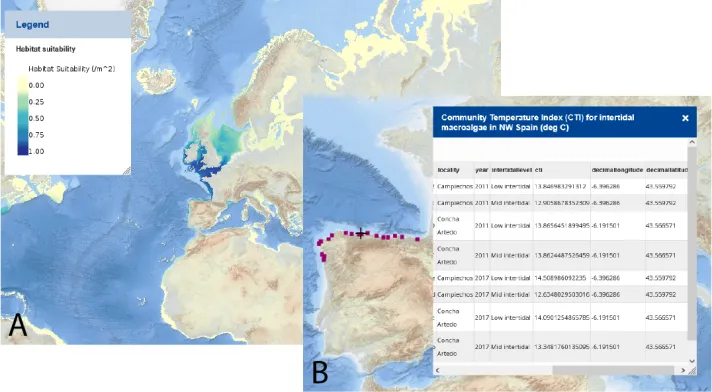Ocean warming is changing marine species distributions and modifying the structure of coastal communities.In the Southern part of the Bay of Biscay, climate change is affecting canopy-forming macroalgal assemblages which are turning from complex systems holding a wide range of fauna and flora to simpler systems dominated by turf-forming species with warmer affinities. This transition has negative effects on biodiversity, but also in the ecosystem services provided by those organisms with further consequences in associated sectors such us fisheries or tourism.
In this context, IHCantabria (Instituto de Hidráulica Ambiental de la Universidad de Cantabria) has developed a series of data products to analyze how this transition to communities with warmer affinities affects the intertidal macroalgal assemblages of the NW of Spain. To analyze this pattern, the Community Temperature Index (CTI) has been calculated using field sampling data from EMODnet Biology. The dataset includes information for 18 sites distributed along a longitudinal thermal gradient in NW Spain, two intertidal levels (Low and Mid) and two different years (2011 and 2017).
This CTI could be understood as the weighted mean of species’ thermal preferences calculated for a community, and provides an estimation of the thermal affinities of the community. CTIs are built upon Species Temperature Indexes (STIs), driven from the species thermal distribution, and abundance data from field samples. Given its relevance for the estimation of CTIs, but also for other analyses, the thermal distribution of every sampled species has been collected in an additional (child) data product. An example is shown in Image a), while CTI results are shown in Image b).

